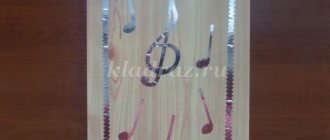Eyes are our assistants in understanding the world; thanks to their functionality, we can visually perceive any pictures, objects, etc. Next, we will study the anatomical structure and functions of the human eye.
The visual system is unique and complex. It took scientists many years to figure out how it works. With the help of a paired organ, you receive about 95 percent of information about the outside world.
People have the ability to see not with their eyes themselves, but through the visual organ. Functionally, video information can be transmitted through an important component of the eye - the optic nerve, and also with the help of the chiasma, the visual tracts that are located in certain areas of the occipital part of the meninges. There an image is formed that stands before the eyes. It is these parts of the visual system that play a leading role in functionality.
Functions of the human eye: features
It is interesting that a person has two eyes, this is in order to get 3-D pictures. The far right part of the visual organ is responsible for covering the right part of the image, and the left part for the left part. And the image from the right eye is transmitted to the left hemisphere, and from the left to the right. The information is then combined into one whole.
Any violation of this functionality disrupts binocular vision. More precisely, a person develops double vision. You will see completely different images, this will significantly reduce your quality of life.
But this is not about that; we will further study the structure and functions of the human eye in detail.
The eyes work on the principle of a camera, where the lens is a cornea with a lens and a pupil . The lens automatically focuses images on the retina . Thanks to the retina, pictures are remembered, and then the “photos” are processed in the brain.
Below, see the anatomical diagram of the eye organ , there you can find information about what each part of the eyeball is responsible for.
Retina
The retina (the inner, sensitive layer of the eye) lines the cavity of the eyeball from the nutria. This is the thinnest of the eye membranes, its thickness ranges from 0.07 to 0.5 mm. The retina has a complex structure and consists of 10 layers of cells. This shell of the eye can be compared to the film of a camera; its main role is image formation (light and color perception), with the help of special sensitive cells - rods and cones. The rods are located mainly on the periphery of the retina and are responsible for black-and-white, twilight vision. Cones are concentrated in the central parts of the retina - the macula, and are responsible for fine details of objects and color. Nerve fibers coming from sensory cells form the optic nerve, which leaves the posterior pole of the eye and penetrates the cranial cavity, into the brain. You can get more complete information about the structure and function of the retina of the eye in the Retina section.
How do human eyes work?
The eye consists of:
- from the organ of vision
- The organ of vision includes the eyeball and optic nerve
- muscular motor system
- lacrimal apparatus
- the eye sockets in the skull where the eyeballs are located.
External structure of the eye
Eyelids
The entire eyeball is reliably protected from the effects of negative environmental factors and accidental injuries by special partitions - for centuries.
The eyelid itself consists of muscle tissue covered on top with a thin layer of skin. Thanks to the muscles, the eyelid can move; when the upper and lower protective septum are closed, the entire eyeball is evenly moistened, and foreign objects that accidentally enter the eye are removed.
The preservation of the shape and strength of the eyelid itself is ensured by cartilage, which is a dense formation of collagen, in the thickness of which there are special meibomian glands, designed to produce a fatty component that improves the closure of the eyelids and the contact of the eyeball with their surface. The mucous membrane, the conjunctiva, is attached to the cartilage on the inside, designed to produce a moisturizing fluid that improves the sliding of the eyelid relative to the eye.
The eyelids have a very extensive blood supply system, and all their work is completely controlled by the oculomotor, facial and trigeminal nerve endings.
Diagram of the structure of the human eyeball
The structure of the human eyeball
See clearly how the human eyeball is structured above. As you can see, the circuit is complex, but thanks to its detailed description below, you can easily figure it out.
- First comes the cornea - a dense and transparent film that covers the eye. This membrane contains blood vessels, thanks to which refraction occurs. The cornea is in contact with the sclera. This shell, unlike the cornea, is opaque.
- Next you will see the anterior chamber of the eye - the area separating the iris and cornea. There is liquid in the chamber.
- The round iris has a small circle inside that looks like a hole - the pupil. It serves to contract and relax the pupil and consists of muscle mass. Also, the iris can be of various shades of colors. It differs from person to person and may be blue or green. Thanks to this part of the eye, the light flow changes.
- The small dark circle in the iris is the pupil. Its size changes depending on the light. In bright sunshine, the pupils constrict, and in the evening they dilate.
- Next comes the lens, which is the “lens” of the eye. In terms of quality, it has elastic properties, is transparent, and changes shape to enhance sharpness. The lens is considered the optical component of the eye.
- The substance in the form of a vitreous body is similar to a gel, located at the back, thanks to which a certain rounded shape of the eyes is maintained. The vitreous body takes part in the ocular metabolic system. Refers to the optics of the eye.
- Photoreceptors, nerve endings that are present in the retina are highly sensitive to light. Nerve cells produce rhodopsin, after which light energy is converted into motor energy in nerve tissue. This is why a photochemical reaction occurs. Also, nerve endings, due to their high sensitivity to light, contribute to the development of peripheral vision and vision in the dark.
- Another important organ of the eyeball is the sclera, with an opaque structure, it borders on the cornea. Six muscles are attached to this shell, which are responsible for the movement of the eyeball. The sclera also contains many vessels and nerve fibers.
- Just behind the sclera is the choroid . Thanks to it, blood flows inside the eyes. When the disease develops, the choroid tends to become inflamed.
- Transmission from the nerve fibers of the eyeball to the brain occurs via the optic nerve .
Structural parts of the eye
The information the eye receives is light reflected from objects. The final stage is information entering the brain, which actually “sees” the object. Between them is the eye - an incomprehensible miracle created by nature.
Photo with description
The first surface that light hits is the cornea . This is a “lens” that refracts the incident light. Parts of various optical instruments, such as cameras, are designed like this natural masterpiece. The cornea, which has a spherical surface, focuses all rays at one point.
But before the final stage, light rays have to go a long way:
- The light first passes through the anterior chamber containing a colorless liquid.
- The rays fall on the iris , which determines the color of the eyes.
- The rays then pass through the pupil of the eye , a hole located in the center of the iris. The lateral muscles are capable of dilating or constricting the pupil depending on external circumstances. Too bright light can harm the eye, so the pupil narrows. In the dark it expands. The diameter of the pupil reacts not only to the degree of illumination, but also to various emotions. For example, a person experiencing fear or pain will have larger pupils. This function is called adaptation.
- The posterior chamber contains the next miracle - the lens . This is a biological biconvex lens, the task of which is to focus the rays on the retina, which acts as a screen. But, if the glass lens has constant dimensions, then the radii of the lens can change with compression and relaxation of the surrounding muscles. This function is called accommodation. It consists in the ability to see sharply, both distant and close objects, changing the radii of the lens.
- The space between the lens and the retina is occupied by the vitreous . The rays pass through it calmly, thanks to its transparency. The vitreous helps maintain the shape of the eye.
- The image of the object is displayed on the retina , but upside down. It turns out this way due to the structure of the “optical scheme” for the passage of light rays. In the retina, this information is recoded into electromagnetic impulses, after which they are processed by the brain, which reverses the image.
This is the internal structure of the eye and the path of light flow inside it. Video:
Diagram of the structure of the lacrimal system of the eye
Next, visually look at the external structure and functions of the human eye, what muscles move it.
Structure and function of the eye
The diagram above shows the operation of the lacrimal system ; this system involves: lacrimal canals, lacrimal sac, lacrimal caruncle, lacrimal canaliculi (see diagram). Thanks to these components, a person can cry. Also, over the centuries, the cornea has been moisturized and cleansed.
The picture shows that the eye is round in shape; the approximate size of the eyeball in adults is about 23 millimeters .
The organs of vision are located in the skull, in the eye sockets , and on the outside they are protected by eyelids and eyelashes. The inside of each eyelid is covered with conjunctiva, and the outside with skin tissue. Inside the eyelids there is muscle mass and cartilage tissue. Thanks to the glands on the inside of the eyelids, the surface of the cornea is washed with tear contents. There are tear ducts on the inner edge of the eyelids.
Cameras of the eye
Between the cornea and the iris there is a space - the anterior chamber of the eye. Between the peripheral part of the cornea and the iris is the angle of the anterior chamber. There is a complex drainage system here that ensures the outflow of intraocular fluid. Behind the iris is a lens shaped like a biconvex lens. The lens is fixed to the ciliary body with the help of many thin ligaments. Between the posterior surface of the ciliary body and the iris, as well as the anterior surface of the lens, the posterior chamber of the eye is located. Behind the lens is the vitreous body, which fills the cavity of the eyeball and maintains its turgor.
The chambers of the eye are filled with aqueous humor - a colorless intraocular fluid that washes the internal ocular structures, nourishes the cornea and lens, which do not have their own blood supply.
The structure of the muscular system of the eye
eight muscles in the orbits , six of which are responsible for the movement of the eye itself, four of them are straight, two are oblique (raise the upper eyelid, and also the orbital muscle). The muscle fibers, except the last two, exit the orbit and form a common tendon ring . The tendons form a tourniquet with the nerve sheath and act on the fibrous plate , which is also responsible for closing the superior orbital fissure.
The image below shows a detailed structure of the motor muscular system of the human eye. Thanks to the external muscles, which are indicated in the picture as extraocular muscles, the visual organs are able to move. Therefore, people can easily move their gaze from side to side, look at any objects or creatures that attract their attention.
Muscular motor system of the human eye
It is interesting that the eyes have auxiliary protective organs that can hide them from adverse factors. The eyelids are not only capable of covering the delicate membrane ( cornea ), but also are an auxiliary tool for the outflow of tears and moisturizing the outer membrane of the eyeball. Tears are necessary for humans as moisturizers for the cornea, and they also have a bactericidal effect, washing away dust particles and specks from the surface of the cornea.
The most interesting thing is that without a final analysis of the perception of visual information in the brain, in its shell, namely in the occipital zone, a person will not perceive the picture. For complete information, you cannot do without a brain.
Peripheral part:
Eye protective apparatus
• The orbit is the bony container for the eye. It has the shape of a truncated tetrahedral pyramid, with its apex facing the skull at an angle of 45%. Its depth is about 4-5 cm, dimensions 4 * 3.5 cm. In addition to the eye, it contains the fatty body, optic nerve, muscles and blood vessels of the eye.
• The eyelids (upper and lower) protect the eyeball from various objects. They close even with the movement of air and with the slightest touch to the cornea. With the help of blinking movements of the eyelids, small particles of dust are removed from the surface of the eyeball, and the tear fluid is evenly distributed. The free edges of the eyelids fit tightly to each other when they close. Eyelashes grow along the edge of the eyelids. They also protect the eye from small objects and dust getting into it. The skin of the eyelids is thin, easily folded. Under the skin of the eyelids there are muscles: the orbicularis oculi muscle, with which the eyelids close, and the muscle that lifts the upper eyelid. The inside of the eyelids is covered with conjunctiva.
Adnexa of the eye
Conjunctiva . It is a thin (0.1 mm) mucous tissue that, in the form of a delicate membrane, covers the back surface of the eyelids and, having formed the fornix of the conjunctival sac, passes to the front surface of the eye. It ends at the limb. When the eyelids are closed, a slit-like cavity resembling a bag forms between the layers of the conjunctiva. When the eyelids are open, its volume decreases noticeably. The main function of the conjunctiva is protective.
Lacrimal apparatus of the eye
Consists of the lacrimal gland, lacrimal puncta, canaliculi, lacrimal sac and nasolacrimal duct. The lacrimal gland is located in the upper outer wall of the orbit. It secretes tears, which through the excretory canals reach the surface of the eye and flow into the lower conjunctival fornix. Then, through the upper and lower lacrimal openings, which are located in the inner corner of the eye on the edges of the eyelids, they enter the lacrimal sac through the lacrimal canaliculi (located between the inner corner of the eye and the wing of the nose), from where it enters the nose along the nasolacrimal canal.
A tear is a transparent liquid with a slightly alkaline environment and a complex biochemical composition, most of which is water. Normally, no more than 1 ml is released per day. It performs a number of important functions: protective, optical and nutritional.
Muscular apparatus of the eye
The six extraocular muscles are divided into two oblique muscles: superior and inferior; four straight lines: superior, inferior, lateral, medial. As well as the muscle that lifts the upper eyelid and the orbicularis oculi muscle. With the help of these muscles, the eyeball can rotate in all directions, raise the upper eyelid, and also close the eyes.
Eyeball
The eye is located in the orbit and is surrounded by soft tissues (fatty tissue, muscles, nerves, etc.). In front it is covered with the conjunctiva and covered by the eyelids. The eyeball consists of three membranes: outer, middle and inner, limiting the internal space of the eye into the anterior and posterior chambers of the eye, as well as the space filled with the vitreous body - the vitreous chamber.
- The outer (fibrous) membrane consists of an opaque part - the sclera and a transparent part - the cornea. The junction of the cornea and the sclera is called the limbus.
- The sclera is the opaque outer layer of the eyeball that merges at the front of the eyeball into the transparent cornea. 6 extraocular muscles are attached to the sclera. It contains a small number of nerve endings and blood vessels.
- The cornea is the transparent part (1/5) of the fibrous membrane. The place where it meets the sclera is called the limbus. The shape of the cornea is ellipsoidal, the vertical diameter is 11 mm, the horizontal diameter is 12 mm. The thickness of the cornea is about 1 mm. The transparency of the cornea is explained by the uniqueness of its structure; all cells in it are arranged in a strict optical order and there are no blood vessels in it.
The cornea consists of 5 layers:
- anterior epithelium;
- Bowman's shell;
- stroma;
- Descemet's membrane;
- posterior epithelium (endothelium).
The cornea is rich in nerve endings, so it is very sensitive. The cornea not only transmits, but also refracts light rays; it has great refractive power.
The choroid is the middle layer of the eye, consisting mainly of vessels of different calibers.
It is divided into three parts:
- Iris – front part;
- Ciliary (ciliary) body - middle part;
- Choroid - posterior part.
The iris is shaped like a circle with a hole inside (the pupil). The iris consists of muscles that, when contracted and relaxed, change the size of the pupil. It enters the choroid of the eye. The iris is responsible for the color of the eyes (if it is blue, it means there are few pigment cells, if it is brown, it means a lot). Performs the same function as the aperture in a camera, regulating the light flow.
- The anterior chamber of the eye is the space between the cornea and the iris. It is filled with intraocular fluid.
- The pupil is an opening in the iris. Its size usually depends on the light level. The more light, the smaller the pupil.
- The lens is the “natural lens” of the eye. It is transparent, elastic - it can change its shape, almost instantly “focusing”, due to which a person sees well both near and far. Located in the capsule, held in place by the ciliary band. The lens, like the cornea, is part of the optical system of the eye.
The ciliary (ciliary) body is the middle thickened part of the choroid, having the shape of a circular ridge, consisting mainly of two functionally different parts: 1 - vascular, consisting mainly of vessels, and 2 - ciliary muscle. The vascular part in front bears about 70 thin processes. The main function of the processes is to produce intraocular fluid that fills the eye. Thin ligaments of Zinn extend from the processes, on which the lens is suspended. The ciliary muscle is divided into 3 portions: external meridional, middle radial and internal circular. By contracting and relaxing, they participate in the process of accommodation.
The choroid is the posterior part of the choroid, consisting of arteries, veins and capillaries. Its main function is to nourish the retina and transport blood to the ciliary body and iris. It gives a red color to the fundus of the eye due to the blood it contains.
Vitreous humor - the posterior part of the eye is occupied by the vitreous humor, enclosed in a chamber. It is a transparent gelatinous mass (gel-type), with a volume of 4 ml. The gel is based on water (98%) and hyaluronic acid. There is a constant flow of fluid in the vitreous body. Function of the vitreous body: refraction of light rays, maintaining the shape and tone of the eye, as well as nourishing the retina.
Inner retina (retina)
The retina is the first section of the visual analyzer. In the retina, light is converted into nerve impulses, which are transmitted along nerve fibers to the brain. There they are analyzed, and the person perceives the image. The retina consists of the following 10 layers deep into the eyeball:
- pigmented;
- photosensory;
- external limiting membrane;
- outer nuclear layer;
- outer mesh layer;
- inner nuclear layer;
- inner mesh layer;
- ganglion cell layer;
- layer of optic nerve fibers;
- internal limiting membrane.
The outer layer of the retina is pigmented. It absorbs light, reducing its scattering inside the eye. The next layer contains the processes of retinal cells - rods and cones. The processes contain visual pigments - rhodopsin (rods) and iodopsin (cones). The optically active part of the retina can be seen during an eye examination. It's called the fundus. In the fundus you can see the vessels, the optic disc (the place where the optic nerve exits the eye), as well as the macula. The macula (macula) is the central part of the retina, where the maximum number of cones responsible for color vision is concentrated and has the greatest visual ability.
The structure of the optic nerve of the human eye
With the help of the optic nerve, nerve impulses from light stimuli are transmitted from the retina to the visual center located in the occipital cortex of the brain.
In the figure below, see the diagram of the visual analyzer.
- The perceiving part of the image is the eyeball.
- The pathways that carry the visual impulse are the optic nerve, chiasm, and optic tract.
- Subcortical centers (numbered 5 in the diagram).
- Visual centers in the cerebral cortex.
How are eyes constructed?
Structure of the eye
1 - vitreous body, 2 - serrated margin, 3 - ciliary muscle, 4 - ciliary girdle, 5 - Schlemm's canal, 6 - pupil, 7 - cornea, 8 - iris, 9 - lens nucleus, 10 - lens cortex, 11 - conjunctiva , 12 - ciliary process, 13 - medial rectus muscle, 14 - retinal arteries and veins, 15 - blind spot, 16 - dura mater, 17 - central retinal artery, 18 - central retinal vein, 19 - optic nerve, 20 - yellow spot, 21 - central fovea, 22 - sclera, 23 - choroid, 24 - retina, 25 - superior rectus muscle.
How to draw an anatomical drawing of the organ of vision?
Nowadays, human anatomy has been studied thoroughly, therefore there are many guides that can be used to easily draw human organs, including the visual ones. Below is an example of such a drawing, which shows the structure of a human eye. From such an image one can recognize both the structure and functions of the human eye.
Anatomy of the visual organ, diagram
Eye shells
The human eye has several types of membranes, each of which plays its own important role in the reliable operation of the ocular apparatus and protecting it from harmful influences.
Thus, the fibrous membrane protects the eye from the outside, the choroid retains excess light rays with its pigment layer and prevents them from reaching the surface of the retina, and also distributes blood vessels throughout all layers of the eyeball.
In the depths of the eyeball itself there is a third eye shell - the retina, consisting of two parts - pigment, located outside and inside. In turn, the inner part of the retina is also divided into two parts, one of which contains light-sensitive elements, and the other does not.
The outermost layer of the human eye is the sclera, which is usually white, sometimes with a bluish tint.





